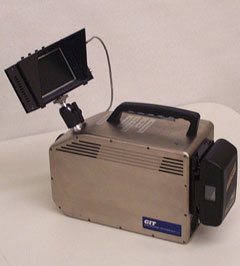Equipment
AEOS Unmanned Surface Vehicle [Spec.]:
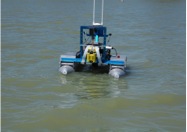
The unmanned surface vehicle or USV is a marine vehicle designed to handle a variety of instrumentation and payload. It is a catamaran design with a central T shaped chassis that supports the instrumentation, power, communications and the control system. An onboard wireless interface gives control of the instrumentation deployed with USV. The propulsion is a twin-screw design providing upto 110 lbs of thrust. The USV is engineered for both autonomous and tele-operated control.
Currently, we are developing a non-linear control algorithm to enable autonomous station keeping for the USV.
PackBot 510 Unmanned Ground Vehicle [Spec.]:
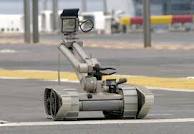
The PacBot 510 is a tactical mobile robot that performs multiple missions while keeping first responders out of harm’s way. PackBot easily climbs stairs, rolls over rubble and navigates narrow passages with sure-footed efficiency, traveling at speeds of up to 5.8 miles per hour. PackBot is a highly adaptable robot. PackBot’s modular digital architecture accommodates a wide variety of interchangeable payloads that enable a wide variety of missions. The robot can be reconfigured quickly, based on the needs of the mission and the operator’s preferences. PackBot can be hand carried and deployed by one person in less than two minutes. No expensive, specialized equipment or vehicles are necessary; PackBot can be easily loaded into a MOLLE pack, the trunk of a car or a helicopter.
EEG Headset [Spec.]:
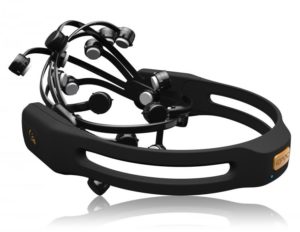
The Emotiv EPOC is a high resolution, neuro-signal acquisition and processing wireless neuroheadset. It uses a set of sensors to tune into electric signals produced by the brain to detect player thoughts, feelings and expressions and connects wirelessly to PCs.
Using the provided APIs, we would be developing applications for real time stress and mental workload detection.
Eye Tracker:
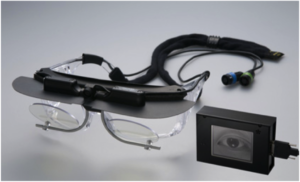
The IScan Omniview Eye-tracker provides real time eye tracking data and also does parallax correction. After calibration of the data it provides the binocular point of gaze superimposed over the scene image. The eye-tracker will be used as a tool for facilitating efficient human robot interaction. An example scenario can be use of heterogenous sets of robots (aerial and marine robot for inspection). Here using the eye tracker and other physiological sensors a robust, mathematical framework for heterogeneous and collaborative human-robot interaction will be developed. The eye-tracker will enable in-depth understanding for HRI problems.
Fastec High Speed Camera [Spec.]:
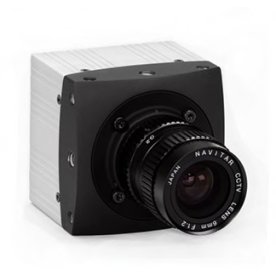
High Speed Camera
The Fastec High Speed camera can record rapid processes at up to 506 fps at 1280 x 1024 full resolution and up to 112,000 fps at reduced resolution. The camera will be used to observe random events of significance at a very high frame rate which can provide a cue behind the dynamics.
Sherlock Scientific Imaging Spectrometer [Spec.]:
The Sherlock Scientific is an imaging spectrometer for research professionals interested in understanding the infrared spectrum of hot gases and other species. The Sherlock Scientific can be used in applications where absorption, emission and reflected signatures are of interest. As an example, the remote combustion analysis of flames and flares, concentration and speciation of hot gas clouds, and spectral analysis of various targets.
TelosB Sensor node [Spec.]:
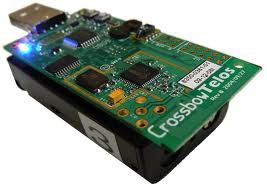
MEMSIC’s TelosB is available as a TPR2400 Processor Radio and TPR2420 Mote, both are open-source platform designed to enable cutting-edge experi- mentation for the research community. The TPR2400 and TPR2420 bundles all the essentials for lab studies into a single platform including: USB programming capability, an IEEE 802.15.4 radio with integrated antenna, a low-power MCU with extended memory.
Physiological Sensors [Spec.]:
Biopac BioNomadix sensors are wireless, wearable physiology monitoring devices. BioNomadix noninvasively record high quality data while comfortably allowing subjects to move freely in natural indoor environments. It uses digital transmission and short leads placed close to the signal source to provide excellent signal quality. Using these sensors we can monitor ECG, EMG, GSR, Breathing, Pulse, Temperature parameters in real time. These physiological sensors will enable human-robot interaction research in search and rescue domain that is far more time-critical and complex than existing HRI domains. These sensors will allow us to assess parameters like cognitive indices, stress, relaxation, emotional stimuli, mental workload etc. These sensors will allow us to measure human performance in a human-robot team.
Nuclear Sensors [Spec.]:
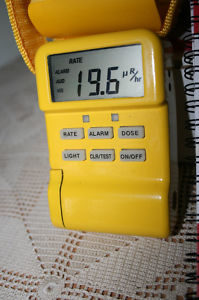
The potential threat of a radiological terrorism incident requires that first responders are equipped with a radiation monitor that is designed to address the radiation hazards they may face. CANBERRA’s UltraRadiac-Plus – based on a US Military design – is a small, rugged, simple to operate radiation monitor that displays both the radiation levels and the total dose that is received. The UltraRadiac-Plus also has a unique “stay time” feature that shows the wearer how much time (at the current dose rate) he/she can remain in place before a high dose alarm is reached. Utilizing the included infrared RS-232 port and the equipment’s significant storage capability, the UltraRadiac-Plus can greatly assist in the efficient dose management of personnel in field situations.
Volatile Organic Compound Gas Monitor (ppbRAE 3000) [Spec.]:
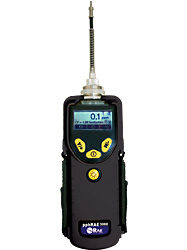
The ppbRAE 3000 is the most advanced handheld volatile organic compound (VOC) gas monitor on the market. Its Photoionization Detector’s (PID) extended range of 1 ppb to 10,000 ppm makes it an ideal instrument for applications from HazMat/Homeland Security, industrial hygiene, to Indoor Air Quality and military applications. With a 10.6eV lamp and PID technology, the sensor provides some unique features: A 3-second response time, Extended range up to 10,000 ppm with improved linearity, Humidity compensation with inbuilt humidity and temperature sensors etc.
Weather Station [Spec.]:
The Davis Vantage Vue wireless weather station provides accurate, reliable weather monitoring in a self-contained, easy-to-install system. It includes outdoor sensor array and LCD console. The weather station can mounted on top of a vehicle for measurements during field experiments. The integrated Sensor Suite including temperature, wind speed and direction, dew point, rain, barometric pressure, and humidity sensors. The unit also includes a WeatherLink data logger and software for additional analyses.
Computing and Storage Servers:
As part of this project, a number of servers have been purchased. This includes two Dell Rack servers and one Mac Pro server. The Dell Servers are mounted on a mobile shock-proof server rack. This will enable the servers to be transported to the disaster zone. The Dell servers are compute server (with 2 quad core Intel Xeon processors and 48 GB memory) and storage server ( with 1 Quad core intel Xeon processor and 3 TB of disk space which can be increased). The Mac Pro will be used for development of human computer interaction tools and interfaces.
